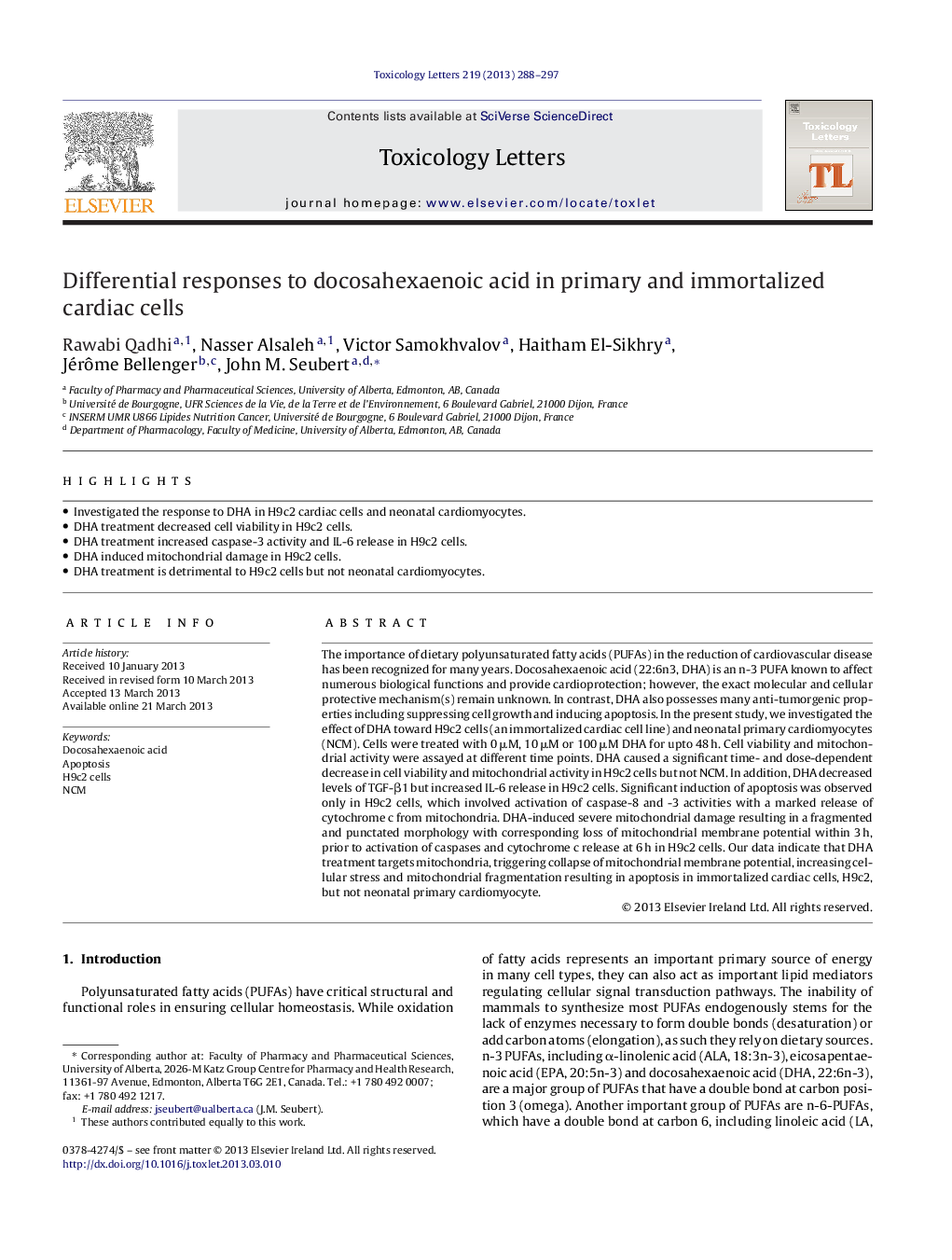| کد مقاله | کد نشریه | سال انتشار | مقاله انگلیسی | نسخه تمام متن |
|---|---|---|---|---|
| 5860619 | 1133208 | 2013 | 10 صفحه PDF | دانلود رایگان |
- Investigated the response to DHA in H9c2 cardiac cells and neonatal cardiomyocytes.
- DHA treatment decreased cell viability in H9c2 cells.
- DHA treatment increased caspase-3 activity and IL-6 release in H9c2 cells.
- DHA induced mitochondrial damage in H9c2 cells.
- DHA treatment is detrimental to H9c2 cells but not neonatal cardiomyocytes.
The importance of dietary polyunsaturated fatty acids (PUFAs) in the reduction of cardiovascular disease has been recognized for many years. Docosahexaenoic acid (22:6n3, DHA) is an n-3 PUFA known to affect numerous biological functions and provide cardioprotection; however, the exact molecular and cellular protective mechanism(s) remain unknown. In contrast, DHA also possesses many anti-tumorgenic properties including suppressing cell growth and inducing apoptosis. In the present study, we investigated the effect of DHA toward H9c2 cells (an immortalized cardiac cell line) and neonatal primary cardiomyocytes (NCM). Cells were treated with 0 μM, 10 μM or 100 μM DHA for upto 48 h. Cell viability and mitochondrial activity were assayed at different time points. DHA caused a significant time- and dose-dependent decrease in cell viability and mitochondrial activity in H9c2 cells but not NCM. In addition, DHA decreased levels of TGF-β1 but increased IL-6 release in H9c2 cells. Significant induction of apoptosis was observed only in H9c2 cells, which involved activation of caspase-8 and -3 activities with a marked release of cytochrome c from mitochondria. DHA-induced severe mitochondrial damage resulting in a fragmented and punctated morphology with corresponding loss of mitochondrial membrane potential within 3 h, prior to activation of caspases and cytochrome c release at 6 h in H9c2 cells. Our data indicate that DHA treatment targets mitochondria, triggering collapse of mitochondrial membrane potential, increasing cellular stress and mitochondrial fragmentation resulting in apoptosis in immortalized cardiac cells, H9c2, but not neonatal primary cardiomyocyte.
Journal: Toxicology Letters - Volume 219, Issue 3, 7 June 2013, Pages 288-297
